Francisco José de Goya y Lucientes (1746-1828) Los Desastres de la Guerra (Disasters of War) (Delteil 120-199; Harris 121-200) The complete set of eighty etchings with burnished aquatint, drypoint and engraving, 1810-20, on heavy, absorbent wove paper, with watermarks J.G.O and a Palmette, fine, early atmospheric impressions, from Harris' First Edition Ia, before corrections to the titles of plates 9, 32, 33, 34, 35, 36, 39 and 47, printed in the workshop of Laurenciano Potenciano, published by the Real Academia de Nobles Artes de San Fernando, Madrid, 1863, all full sheets, in very good condition, bound in the original eight groups of ten impressions with pale pink paper covers numbered in stencil on the front 1 to 8, with the title page and introductory text in the first bound folder, all folders in good condition Plates 162 x 232mm. (6 5/8 x 9 1/4in.); Sheets 248 x 345mm. (9 7/8 x 13 1/2in.) Fußnoten Violence in all its forms, as a representation of the non-sense, is one of the most relevant aspects of Goya's oeuvre. The series of Disasters of War is a testimony of Goya's feelings about war, a critical and innovative reflection about war, about its causes, savage manifestations, as well as its brutal consequences. As explained in the frontispiece to the series 'Tristes pensamientos de lo que ha de acontecer' (Sad thoughts on what is about to happen). The Peninsular War (1808-1814) turned out to be as flagrant a disaster for Napoleon's Grande Armée as its failure to conquer the vast winter wastes of Russia. Napoleon's army was defeated by the military prodigy of Arthur Wellesley, the future Duke of Wellington, as the head of the English troops. But he was also beaten by the desperate collective will of Spanish people – not the army alone which was much the inferior to the invaders – but by the armed civilians who gathered spontaneously against Napoleon's troops. These were guerrillas operating in ambush and attacking under cover of darkness. Guerrilla attacks caused incalculable damage to the French troops and their morale. The response from Napoleon's army was to bring down an iron hand on the Peninsula and carry all types of abuses: mass executions without trials, imprisonments, rape and destruction followed by yet more savage reprisals. Goya was over sixty years old when the Peninsula War broke out and he lived continuously in Spain throughout the whole war. Even though he was too old and already quite deaf to become a war correspondent, his Desastres created a style of their own: pictorial journalism long before the camera was invented; art devoted to reportage. As he inscribed in Plate 44 Yo lo vi 'I saw it'. However, Goya's Disasters are not the first series of images by an artist of war against a resistant civilian population. In 1633, the French engraver Jacques Callot made eighteen small plates known as Les Misères et les Malheurs de la Guerre (Miseries of War) in which tiny soldiers of Cardinal Richelieu's army are depicted torturing and executing tiny civilians. Nevertheless, Goya's etchings are without comparison the more dramatic and varied in narrative, more brutal and savagely beautiful and in every way more humanly moving. Only a few of the eighty plates are dated and none were published in Goya's lifetime. So it is chronologically impossible to identify any specific events to which the Desastres refer. The images fall into three main groups: forty-six plates describe incidents of guerrilla war, the Spanish pueblo against Napoleon's troops. Eighteen are related to the famine that affected the inhabitants of Madrid between 1811 and 1812 – a famine which would have also affected Goya as he was living in the city at the time. And then there are the caprichos enfáticos, fifteen allegorical and satirical images evoking the dashed hopes of the Spanish liberals and ilustrados following Napoleon's defeat after Fernando VII returned to the throne, abolished the 1812 Constitution, and brought about a period of repressi
Francisco José de Goya y Lucientes (1746-1828) Los Desastres de la Guerra (Disasters of War) (Delteil 120-199; Harris 121-200) The complete set of eighty etchings with burnished aquatint, drypoint and engraving, 1810-20, on heavy, absorbent wove paper, with watermarks J.G.O and a Palmette, fine, early atmospheric impressions, from Harris' First Edition Ia, before corrections to the titles of plates 9, 32, 33, 34, 35, 36, 39 and 47, printed in the workshop of Laurenciano Potenciano, published by the Real Academia de Nobles Artes de San Fernando, Madrid, 1863, all full sheets, in very good condition, bound in the original eight groups of ten impressions with pale pink paper covers numbered in stencil on the front 1 to 8, with the title page and introductory text in the first bound folder, all folders in good condition Plates 162 x 232mm. (6 5/8 x 9 1/4in.); Sheets 248 x 345mm. (9 7/8 x 13 1/2in.) Fußnoten Violence in all its forms, as a representation of the non-sense, is one of the most relevant aspects of Goya's oeuvre. The series of Disasters of War is a testimony of Goya's feelings about war, a critical and innovative reflection about war, about its causes, savage manifestations, as well as its brutal consequences. As explained in the frontispiece to the series 'Tristes pensamientos de lo que ha de acontecer' (Sad thoughts on what is about to happen). The Peninsular War (1808-1814) turned out to be as flagrant a disaster for Napoleon's Grande Armée as its failure to conquer the vast winter wastes of Russia. Napoleon's army was defeated by the military prodigy of Arthur Wellesley, the future Duke of Wellington, as the head of the English troops. But he was also beaten by the desperate collective will of Spanish people – not the army alone which was much the inferior to the invaders – but by the armed civilians who gathered spontaneously against Napoleon's troops. These were guerrillas operating in ambush and attacking under cover of darkness. Guerrilla attacks caused incalculable damage to the French troops and their morale. The response from Napoleon's army was to bring down an iron hand on the Peninsula and carry all types of abuses: mass executions without trials, imprisonments, rape and destruction followed by yet more savage reprisals. Goya was over sixty years old when the Peninsula War broke out and he lived continuously in Spain throughout the whole war. Even though he was too old and already quite deaf to become a war correspondent, his Desastres created a style of their own: pictorial journalism long before the camera was invented; art devoted to reportage. As he inscribed in Plate 44 Yo lo vi 'I saw it'. However, Goya's Disasters are not the first series of images by an artist of war against a resistant civilian population. In 1633, the French engraver Jacques Callot made eighteen small plates known as Les Misères et les Malheurs de la Guerre (Miseries of War) in which tiny soldiers of Cardinal Richelieu's army are depicted torturing and executing tiny civilians. Nevertheless, Goya's etchings are without comparison the more dramatic and varied in narrative, more brutal and savagely beautiful and in every way more humanly moving. Only a few of the eighty plates are dated and none were published in Goya's lifetime. So it is chronologically impossible to identify any specific events to which the Desastres refer. The images fall into three main groups: forty-six plates describe incidents of guerrilla war, the Spanish pueblo against Napoleon's troops. Eighteen are related to the famine that affected the inhabitants of Madrid between 1811 and 1812 – a famine which would have also affected Goya as he was living in the city at the time. And then there are the caprichos enfáticos, fifteen allegorical and satirical images evoking the dashed hopes of the Spanish liberals and ilustrados following Napoleon's defeat after Fernando VII returned to the throne, abolished the 1812 Constitution, and brought about a period of repressi
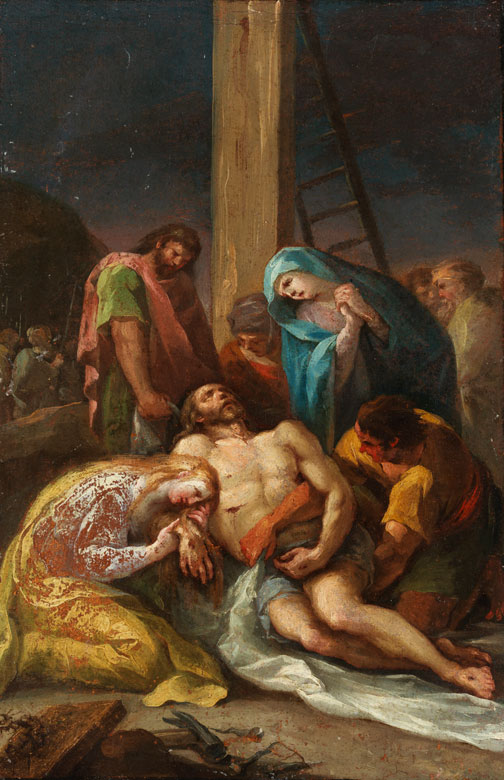


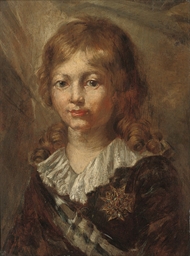
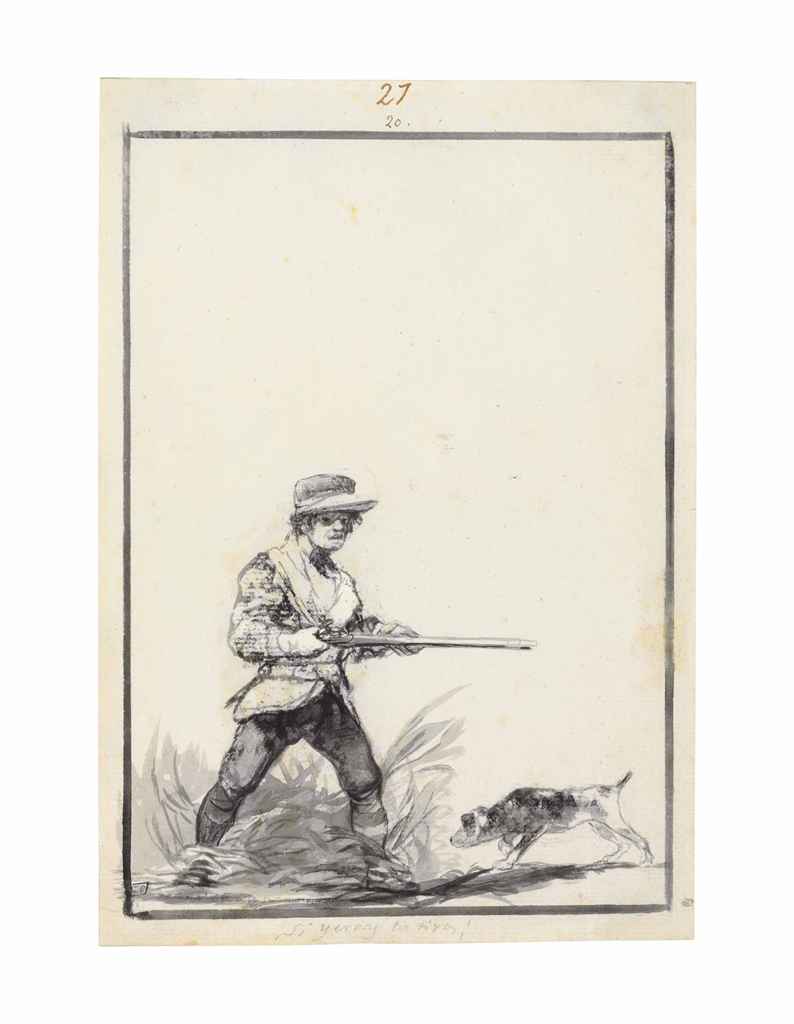

/696/1226696.jpg)
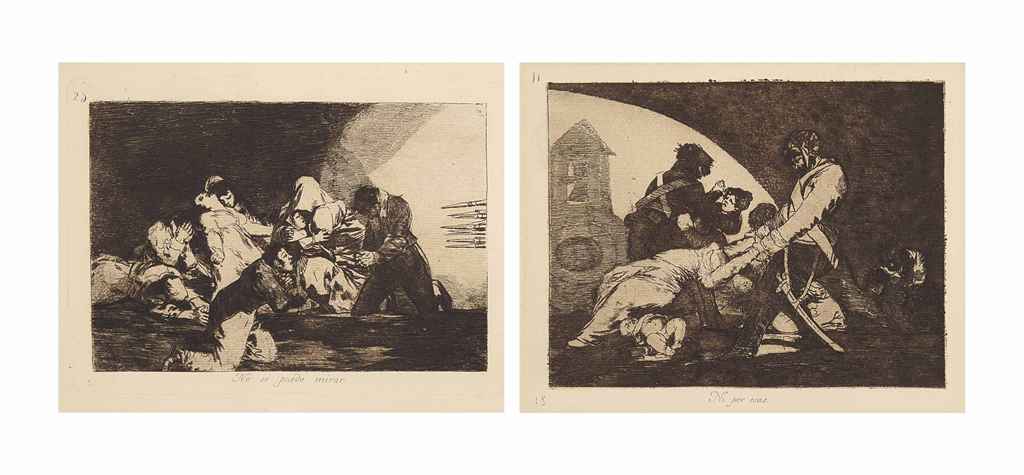
.jpg)
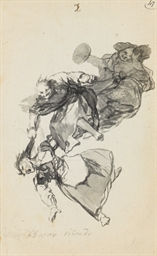
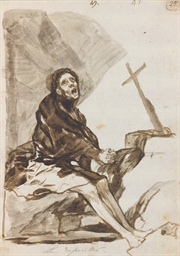
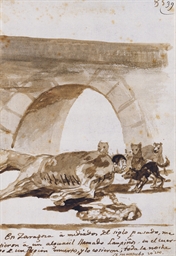
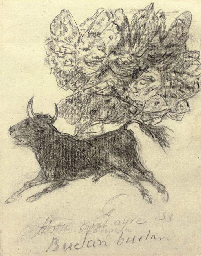
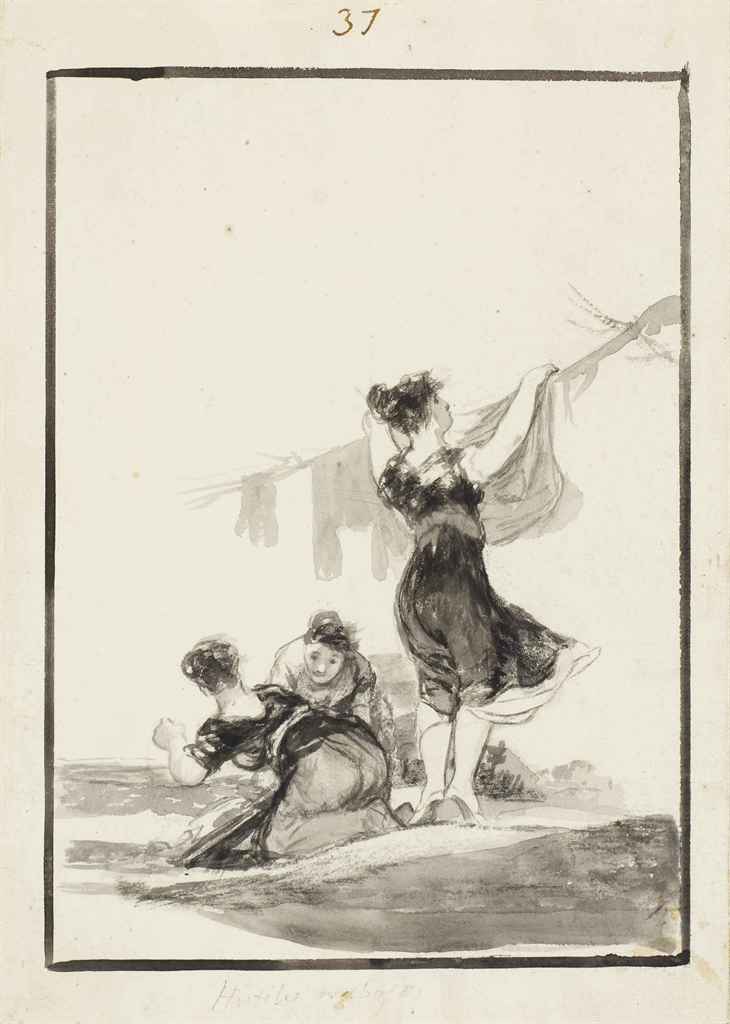

Testen Sie LotSearch und seine Premium-Features 7 Tage - ohne Kosten!
Lassen Sie sich automatisch über neue Objekte in kommenden Auktionen benachrichtigen.
Suchauftrag anlegen